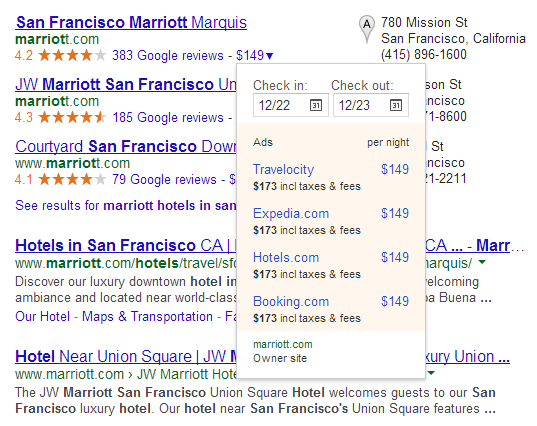4 Trends Paid Search Marketers Must Address In 2014: Audience, Relevance, Social & Mobile
Upon revisiting last year’s post on this topic, a couple of our bold predictions flopped and a couple turned out to be more reality than fantasy. Though we didn’t see Apple monetize the search results served up by Siri, we did see ad formats evolve to increase relevance and user engagement. The inclusion of ad […]
Upon revisiting last year’s post on this topic, a couple of our bold predictions flopped and a couple turned out to be more reality than fantasy. Though we didn’t see Apple monetize the search results served up by Siri, we did see ad formats evolve to increase relevance and user engagement.
The inclusion of ad extensions as a factor in ad ranking and the expansion of Product Listing Ads (PLAs) to show on smartphone devices were less a result of explicit user feedback, as we had predicted, but more based on user behavior. Nonetheless, the changes have spawned a richer and more engaging ad experience.
In 2013, the introduction of Google’s enhanced campaigns and a successful Twitter IPO underscored an unpredictably exciting year for online marketers. These milestone announcements, the continuous growth in digital advertising spend, and the shifting attention of consumers across devices and channels have provided clues to what online marketers can expect in 2014. Let’s take a tiny glimpse into the future and make four predictions about where digital advertising is going next.
1. Audience-Based Search Optimization
This will revolutionize the paid search industry. Search has always been a great indicator of user intent. For example, capturing the intent of booking travel accommodations might exist in the form of the search keywords [california hotels] and [florida hotels]. Both keywords generate clicks and downstream revenue, but let’s assume [california hotels] is more likely to be searched by older, wealthier travelers and drive higher lifetime value customers than [florida hotels], which is searched more by younger, cash-strapped students.
Using demographic data captured by a data management platform (DMP), a travel advertiser could conditionally attribute more value to keywords and ad creative that drive older, wealthier travelers to their website. This audience-based optimization enables advertisers to effectively acquire more customers with higher lifetime value.
2. Industry-Specific Ad Formats
More industry-specific ad formats are likely to emerge. The meteoric rise in PLA adoption by retail advertisers and shoppers provides evidence that richer and more relevant ad formats are the future of paid search.
Google’s Hotel Price Ads (HPAs), though still in beta, are a prime example of a new ad format geared towards a specific industry — Travel and Leisure. Similar to PLAs, the new HPA format enables marketers to deliver highly relevant ads, including price, for accommodations that appeal to travelers. Consequently, we expect to see more ad formats emerge across industries like Automotive and Finance, where rich content such as pricing and rates are likely to increase ad relevance and engagement.
3. Social ROI
Social ROI will be a heavy focus for advertisers as social media publishers begin competing for ad budgets and user attention. Page post ads, promoted tweets, and promoted pins are just some of the ad formats that represent the three largest social media players: Facebook, Twitter, and Pinterest.
Pinterest leads the pack in e-commerce-related sharing, while Facebook continues to hold the lion’s share of all social media activity. Twitter, having gone public this year, will undoubtedly make an effort to prove its advertising model can drive engagement and revenue for brands.
But what’s the value of a Retweet or Pin? Is there lifetime value that can be attributed to a Fan? Answering these questions will not only depend on the technology advertisers deploy, but how well these social publishers can engage users with relevant ads and eventually drive downstream conversions that yield positive ROI.
4. Mobile Optimization
Optimizing For The Mobile Movement has become increasingly challenging over the past year. The growing influence of mobile on offline and cross-device conversions, the increase in user engagement with call extensions, and the rising share of mobile social media users create a highly complex web of touch points.
Tracking and attributing conversions back to the mobile click is no easy task. Cookies aren’t passed across devices or available in-store, call centers aren’t always aligned with internal databases or ad management platforms, and assigning revenue to social signals doesn’t offer a complete picture of ROI. As a result, we expect to see advertisers invest more in technology to address these challenges.
Stitching offline data with online mobile clicks, integrating call tracking solutions, and generating mobile-optimized ad creative and landing pages are just a few strategies that will take priority in 2014. As consumer engagement and spend continues to shift away from desktop and toward mobile devices, advertisers must address their mobile strategy today to capitalize on this growing revenue opportunity tomorrow.
Entering into the New Year, it’s clear that two overarching trends will continue. An evolving search landscape will drive significant innovation in ad technology, and online marketers will invest in these solutions to remain competitive. Undoubtedly, sophisticated advertisers are primed to survive under these conditions. The ability to accurately track and, in turn, effectively target users based on device, intent, and demographic will be critical to success in 2014.
Regardless of whether or not these four predictions become reality, online marketers will need to remain agile and embrace new strategies and technology to win the battle for revenue online.
Contributing authors are invited to create content for Search Engine Land and are chosen for their expertise and contribution to the search community. Our contributors work under the oversight of the editorial staff and contributions are checked for quality and relevance to our readers. The opinions they express are their own.
Related stories
New on Search Engine Land
